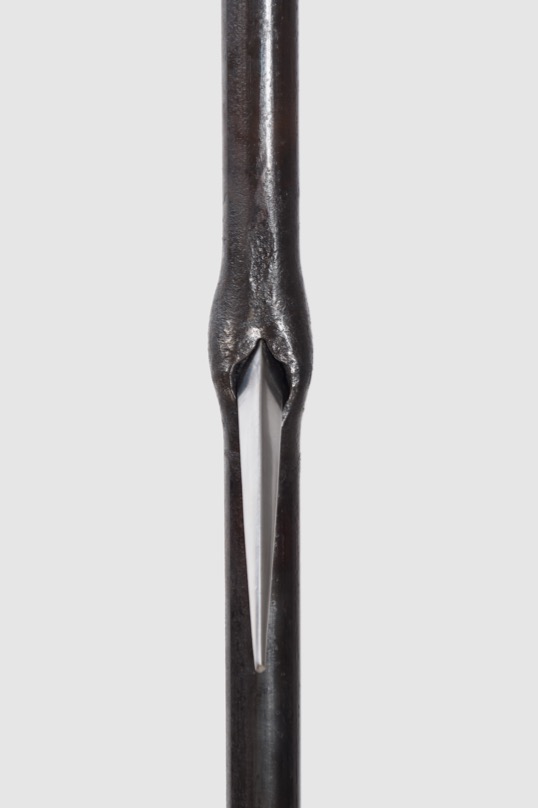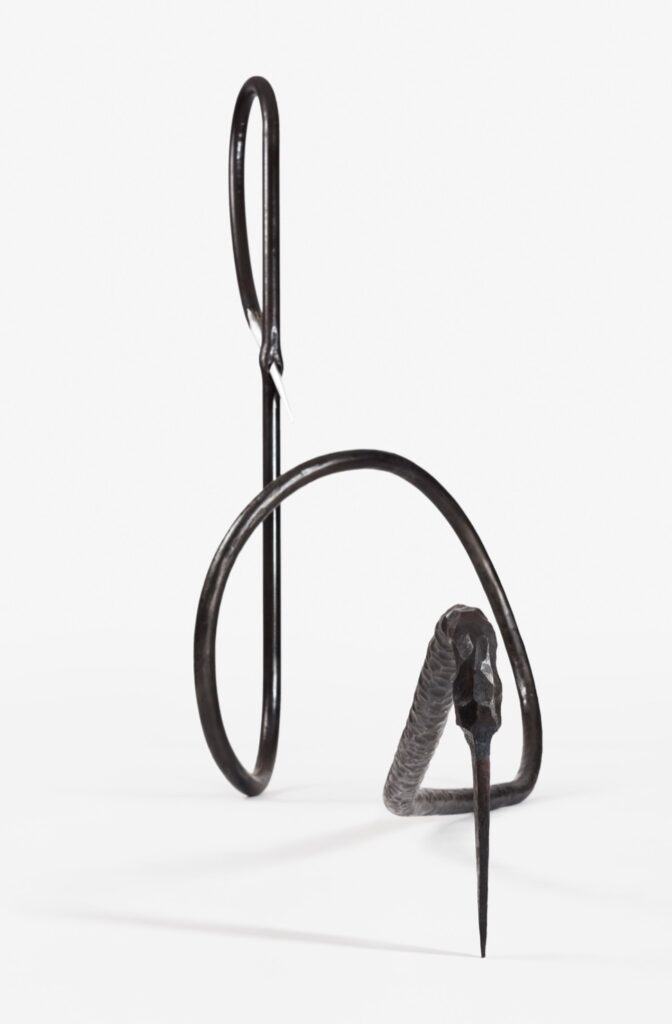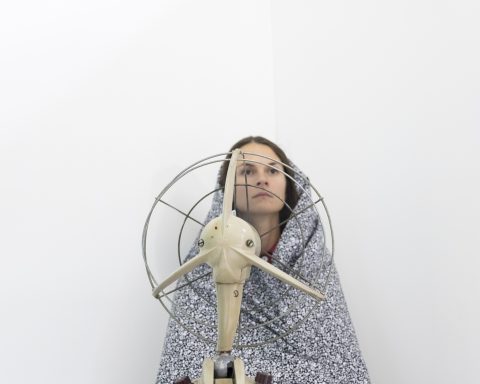Can matter tell stories? In the practice of French-Italian artist Lulù Nuti (Rome 1988), who studied at the Ecole Nationale Supérieure des Beaux Arts in Paris, and lives in Rome, material carries with it an often-latent knowledge. His research starts from here, from the original, pure, raw energies such as concrete, metal, which meet other elements, and from here originate new forms. Artist-induced forms and unintended forms that arise from the encounter of forces, elegant and powerful. Sculptures and installations created for the spaces they inhabit that become signs of contemporaneity.
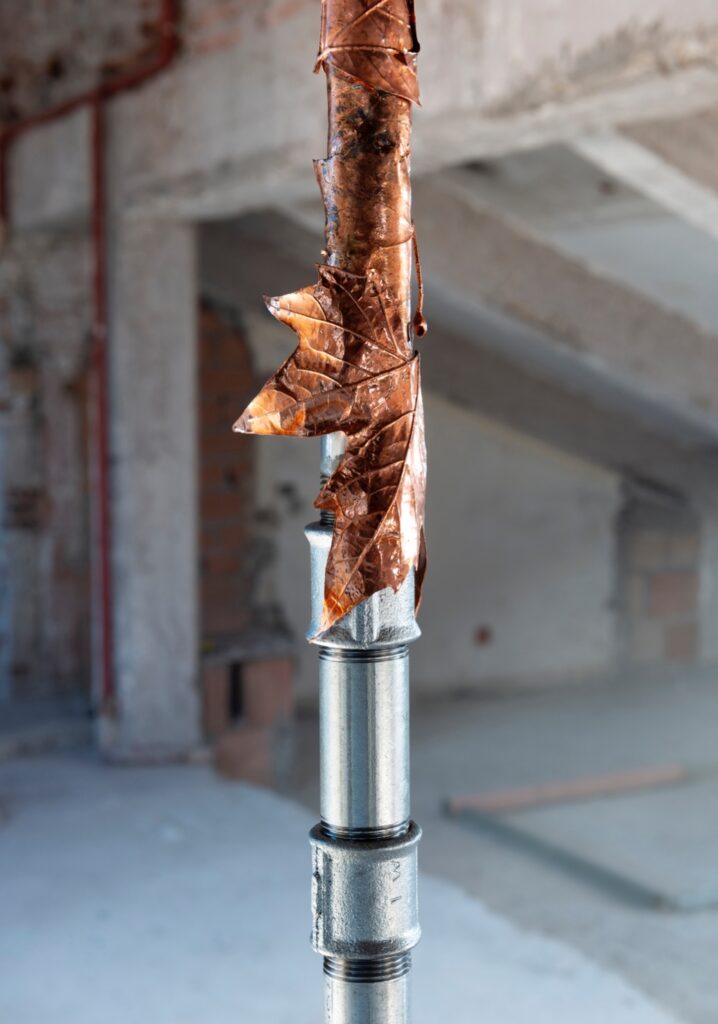
Elena Solito: I always enjoy meeting you Lulù, because each time our encounters, real or long-distance, reveal a few more pieces of your work. And I would like that all these meetings, though held at different times and in different places or non-places (containers), can result as a single conversation diluted over time. I would like to start as always from the “materia”. Because your works are physical, tangible and retain an energy in power.
Lulù Nuti: Thank you, Elena. I enjoy the idea of a conversation diluted in time, which reflects my practice, itself composed of suspended, rarely closed-off discussions.
E.S.: We enter the heart of your work, between fractured and dissected globes; between generative cores and shells that accommodate matter and materials. Tell me about your relationship with the Earth and Calcare il Mondo.
L.N.: As a contemporary sculptor I am always trying to balance fascination for material, and therefore the desire to explore it, and the feeling of adding matter into a world which already suffers from an overproduction of objects. This is why the moment in which I study the materials I’m attracted to is always essential: it allows me to understand if adding a weight into the world is the right thing to do, and most of all, what shape to let it take, to tell an aspect, a reality, tied to that material, which has not yet been spelled out outside of its common use. Calcare il Mondo might be the first work in which I was aware of this modus operandi.
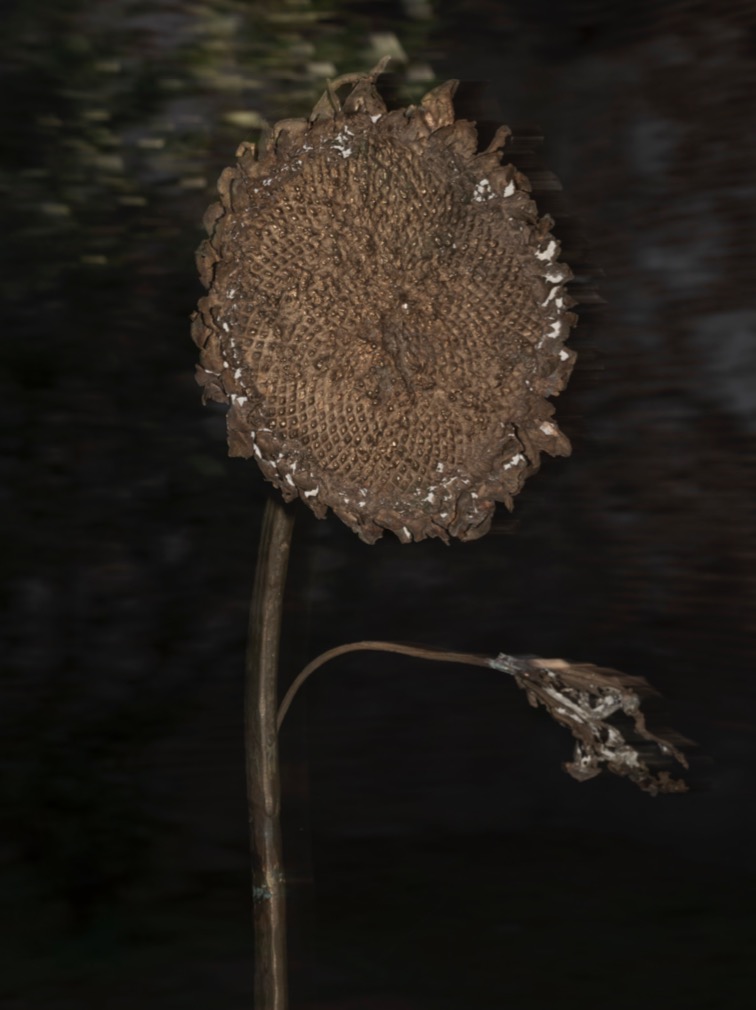
Studying building materials, cement to be more specific, in 2016, eventually materialized the following year, in 2017, during a residency on Lake Como (Bikini Art Residency). The title itself announces the project: Moulding the World, so preserving its shape through a tool which allows us to reproduce it elsewhere. The material is cement, composed mostly of sand, of which there is a limited supply on earth, to the point in which marine floors are excavated in order to supply the global demand for it. An invisible landscape is thus emptied to supplement the visible one. Matter is extrapolated below the horizon to charge what’s above it.
The manner in which I navigated the material was born from that idea; I decided to set it up as a geo-engineering project with a scientific (empirical) approach: I mold the world in one part, in two… but while I mold the northern hemisphere, where do I move the population? Then maybe it’s better to mold it in four parts, in seven parts, to make some slices and move the humans in smaller groups. Seven slices are reminiscent of the moon and its phases. Hence, the world is the new moon.
And what happens if the planet were to collapse under the weight of matter? If it exploded? That’s where Beyond Our Control comes from, geometric shapes containing organic masses, the shape which the planet would have in case the project did not succeed. Then I realize that creating a huge enclosure around the earth would be impossible, so I abandon that idea and I throw matter directly onto the planet. The latter moves and adapts into shapes similar to those of a shell: thus, the Sun Sulphur Irons are born; which bring me back to the beginning of my search: that relationship between the visible and invisible landscape, the origin of the sand the cement contains. It’s a signal: I have circumnavigated the question and it is the material itself which tells me that.
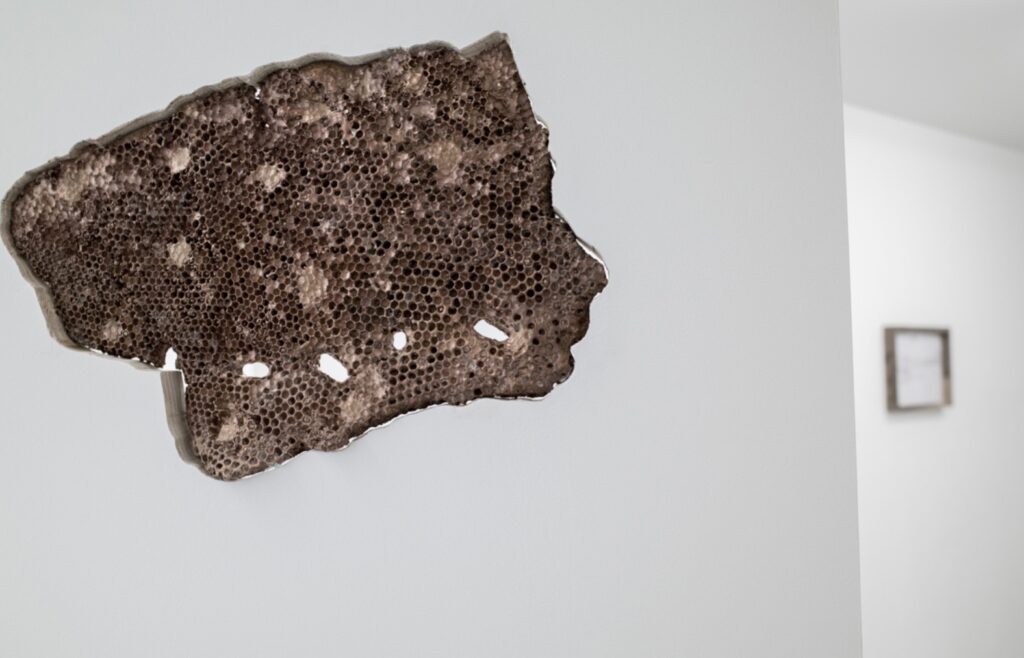
The Sun Sulphur Irons are six, and the earth’s geography was molded with fluorescent materials; as a reference to the light that’s necessary for the creation of life in water, this also allows a double perspective of a single work: a shell by day, and by night, the earth seen from above.
Calcare il mondo (Moulding the World) illustrates an essential aspect of my practice: a continuous dance with material, a back and forth through which the preceding work announces the following one.
E.S.: Why the uroboros? I would like you to tell me about Too Much Heat, Nothing To Eat
L.N.: Too Much Heat, Nothing to Eat was the result of a visit to a tunnel excavation in a mountain in northern Italy, specifically a building site in Arquata Scrivia, directed by a company called Webuild. On this occasion I was aboard an active Tunnel Boring Machine. On top of the enormous size of the machine, what struck me in particular was the sound of the meeting between the iron and the rock. A sound of pain, a kind of scream. In that moment the image of a material returning to its origin became evident, an anti-birth. The material which returns to its origin, making an inverse motion which in some way forces time itself, curving it.
I was invited to this huge building site by Ludovico Pratesi and Marco Bassan for “We Love Art, Vision and Creativity Made in Italy”, supported by MAECI and CDP. The idea was to make a work inspired by a building site. Too Much Heat, Nothing To Eat was born from that sound: a snake forged with Jadran Stenico: we started with a very ancient element, a knife which serves as the sculpture’s base, and as we developed the shape we refined the technique using increasingly sophisticated tools. Until we reached the final extremity, which curves into self-mutilation.
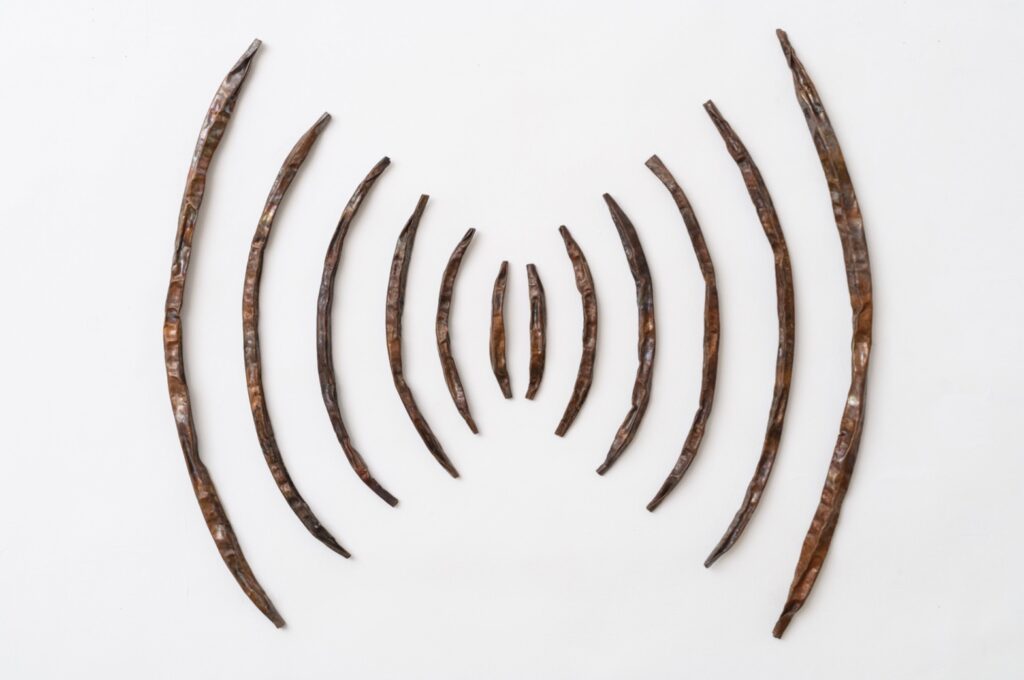
The temperature gets high during the excavations, due to the force of the mountain’s weight which pushes down, and the snake, the tunnel, could collapse at any moment. The site was, paradoxically, simultaneously archaic, and modern, and I wanted that aspect to be readable in the work.
When I was doing research on why a snake eats its own tail and whether they actually do that, I found out that it occurs if he doesn’t have enough food, and if it’s too hot; exactly the conditions which would cause the mountain to crumble in on itself, a discovery which gave the work its title while opening up wider discourse.
E.S.: On the occasion of the realization of the project you just told me about, in the video interview We Love Art, Vision and Creativity made in Italy, you said something that I would like you to elaborate on: “Concrete not so much as a visual burden but as a cure for emptiness.”
L.N.: Curing, the act of care, is taking up more and more space within my work: at the moment it’s through scraps, cleaning them and resituating them into new forms, like in There is No Place Like Home, curated by Giuliana Benassi, where sewing discarded globes with the public was meant as a gesture of care and attention towards the nocturnal space, a way of taming a space and a time hand in hand with the public, not only as an imposition of a work in the space, but as a shared journey. Regarding cement as a cure for emptiness, maybe one day this image will give birth to a specific work, I hope it remains one of those suspended discussions to pick up again together.
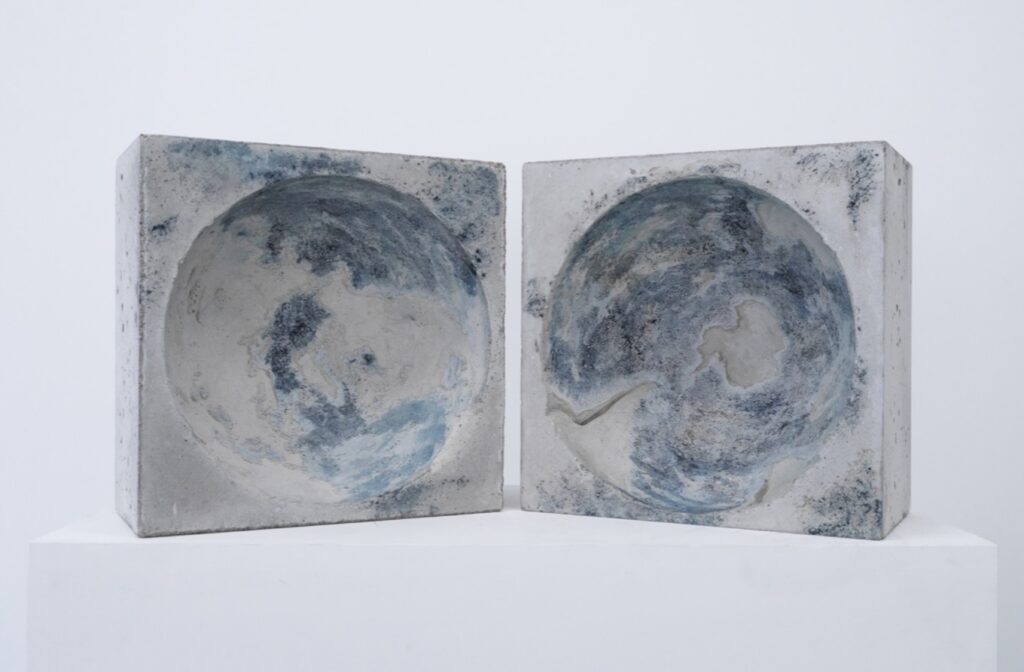
E.S.: Slender structures climb over defined spaces (such as those in tunnels) or architectural armatures. I am thinking of recent works such as Mari, Inferiata and Suspended Title (Radicanti), in which nature resurfaces overbearingly in its elegant sinuosity.
L.N.: Let’s begin with Mari: the installation starts from an interest, which grew with time, in the scraps from the project of “Calcare il Mondo”, which I kept for years as I went forth with the research. Amongst these, some strips of plastic, which were residues from the blow-up globes I use as positives to simulate the earth. Fate wants that many of the plastic strips that don’t remain stuck in the matter are parts of the sea, in the sense that no land geography appears on them, possibly because the parts with land are sculpted with clay, and its weight attracts them to the cement while molding, and the marine part remains exposed.
I decided to use those discarded strips as a base for an immersive installation of cement flags, planted in the ceiling rather than the floor. The ‘motifs’ I pressed onto them have patterns and colors stolen from marine creatures. Wrapping them around the metal poles, while the cement was still fresh, meant that the plastic decreased as the sculptures were formed (a part always remained stuck in the material) and so the scrap turned into an environment. The fact that the poles are suspended and reach just a few centimeters from the ground, on suspended masses at different heights, creates an upturn as if one is below the horizon.
Radicanti on the other hand is a work made with the specific exhibition in mind: ANTE OPERAM, a project by Isabella Vitale, founder of Piano Bi (an experimental space in Rome) in an abandoned house. I decided to collaborate with an architect by asking him which were the most crucial points of the apartment, and I went to ‘support’ them with some tubes, partially industrial and partially made up of galvanized sycamore leaves. The work punctuated the path, creating a rhythm of lights in the space (with the reflective copper) and exasperating the location’s feeling of precarity.
What these two works have in common is the slowing down of the public’s movement through space: they demand presence and attention to one’s movements, as if one were walking in an unknown forest. It seems to me that these types of installations force the viewer to deambulate carefully, anchored to the present.
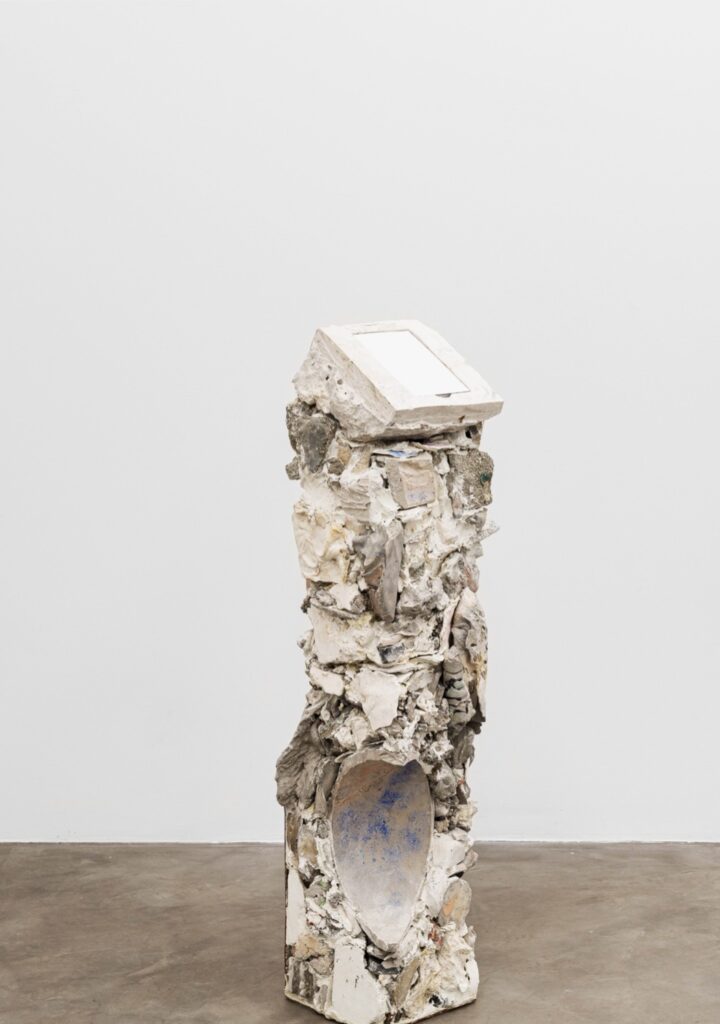
E.S.: What can you tell me instead about Sans Horizon, Orizzonti e Orizzonti (riflessi).
L.N.: These are installations which come from a phrase my dad had told me: “we make time rise” (in Italian it’s rise like when yeast rises). At the time this phrase really struck me, and I started to look for a formula, a sign, to materialize it. Thus, the first horizon was born: a dark line between two brackets. The idea is that it would extend until space allowed, fading relentlessly against the parentheses. The line was drawn, and the parentheses were iron.
The work’s evolution is tied to someone else’s phrase, someone else essential to my life; Pierre Dupont, the blacksmith who initiated me into Iron work: “in blacksmithery we work the center of the earth, which is metal in fusion”. This pushed me to also forge the central line: the movement of matter from the center to the extremities of the earth, from the nucleus to the limit, became evident as a necessity.
These signs multiplied over the years, becoming a sort of continuous translation of my father’s phrase, fed by external visions and events: Orizzonte Sestante, born following a residency on a cargo ship called “Cielo d’Italia”, then Sans Horizon, which is a scream, an expansion of a gesture, like that of a rock thrown into water.
E.S.: I have recently become interested in the concept of origin, and how artists deal with it, by representing elements or concepts. I find these aspects in your research, starting with the forms, the use of materials, such as Sun Sulfur Iron.
L.N.: I think, ultimately, we’ve spent the whole interview talking about the concept of origin. Origin of thought, origin of matter, and as I speak with you, the idea that an origin only reveals itself once the destination is reached becomes increasingly apparent. In the case of Sun Sulfur Iron, it’s surprising how the origin of the work became clear not through my will, but through the material’s reaction to a provocation from me. From that magical moment in the studio, the belief that material is equipped with its own ‘intelligence’ became a certainty for me.
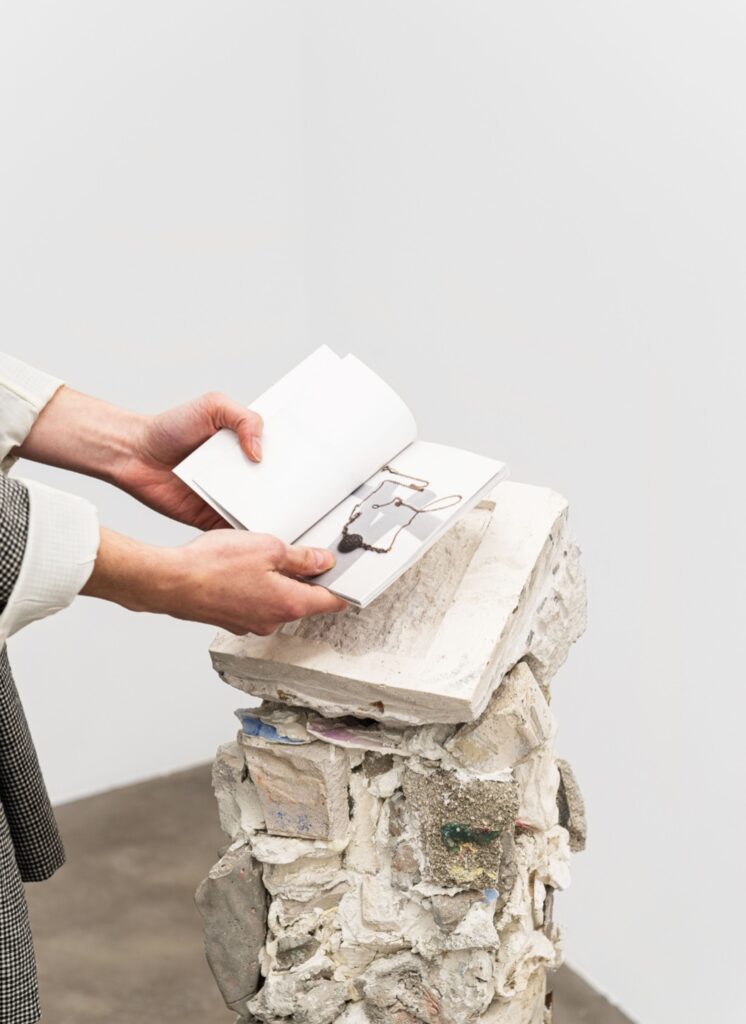
E.S.: The performative aspect in your research is not secondary. Tell me about your collaboration with LU.PA, together with Pamela Pintus.
L.N.: LU.PA is a duo which was born with Pamela Pintus, another artist, in 2018. Due to its nature, LU.PA’s work and research manifests itself in the meeting halfway between two entities in dialogue, exchanging and enhancing thoughts that exceed the sum of two imaginaries, creating a third. Performance is thus the ground on which the duo was born and developed. We have a codependent relationship with the public: we create some presuppositions, with precise but open rules, a vehicle in transit, onto which the public is invited to board and indicate the route.
This aspect ties into my personal practice in an inverse manner:if in my studio I board a material and I learn to drive it, in LU.PA we are the matter and the public rides us.
Now that I think of it, one of my recent works probably had quite a heavy influence from LU.PA. I’m referring to Fin dove si stende la vista, qui regna l’attimo: a bronze sunflower 170 cm tall which moves to follow a member of the public as if they were the sun. In this work the object’s movement depends on the gaze, and the viewer is responsible and an actor of the work’s movement and its appearance to others.
E.S.: What are you working on? What plans do you have for the future?
L.N.: As I write to you, I’m working on a third work composed of scraps and leftovers from the research of Calcare il Mondo, following Notturno and Autoproduction. They are definite forms composed of indefinite forms. Pieces of sculptures and installations which I discarded because the work didn’t need them at that moment, but which I kept for some reason: be it for their plasticity, or to remember the reaction of a pigment with a mortar, for example. I’m in a moment of my life in which, in some way, I’m summing up the journey I’ve walked thus far, and this becomes concrete in very specific works. It’s the case of this sculpture, called Autoritratto: the sum of these pieces of material, stuck amongst one another, which give light to a column which encases a mirror positioned at the height of my own eyes.
I am reflected and recognize myself in these fragments, like memories which, in their incompleteness, shape an individual’s history and consciousness.
